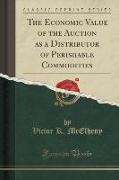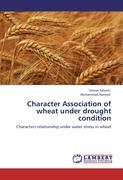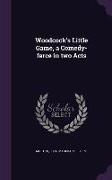The Economic Value of the Auction as a Distributor of Perishable Commodities (Classic Reprint)
BücherAngebote / Angebote:
Excerpt from The Economic Value of the Auction as a Distributor of Perishable Commodities
Hamburg:
All foreign fruits and produce.
Liverpool:
Apples from America, Canada, Australia, Tasmania and Spain.
Oranges from Jaffa, Italy and Spain.
Melons, Tomatoes and Potatoes from Spain and Onions
from Egypt and Spain.
Almeria and Lisbon Grapes, etc., etc.
London:
80% of all foreign fruits and vegetables.
The importance of Auction in England will be emphasized when it is stated that in the year ending May 1, 1915 there were imported into Liverpool, London and Glasgow about 1, 788, 236 barrels and 1, 096, 054 boxes of American and Canadian apples, nearly all of which were sold at public Auction.
In The United States:
In the United States Auction sales of fruits began about the year 1847 and have had a wonderful and sound growth ever since. The circumstances under which Auction was inaugurated in the various fruit industries which now use this method have been strikingly alike from the beginning until the present, and these same circumstances now confront certain industries which have not yet turned to Auction.
In the early days almost all oranges, lemons, grapes and pineapples were imported from foreign lands. Large quantities would arrive at our eastern ports consigned to various importers, buyers were divided and had to trade with various importers in various quarters. There was no uniformity or stability of price. Similar grades would bring widely divergent prices. Some brands would sell well, the same quality bearing a different brand would be sacrificed. Commodities could not be quickly distributed. Distribution was not expanding with increasing offerings. Before a cargo was cleaned up at private sale, another cargo would arrive. Neither shipper nor buyer knew what he was doing. It was not merchandising, it was speculation.
About the Publisher
Forgotten Books publishes hundreds of thousands of rare and classic books. Find more at www.forgottenbooks.com
This book is a reproduction of an important historical work. Forgotten Books uses state-of-the-art technology to digitally reconstruct the work, preserving the original format whilst repairing imperfections present in the aged copy. In rare cases, an imperfection in the original, such as a blemish or missing page, may be replicated in our edition. We do, however, repair the vast majority of imperfections successfully, any imperfections that remain are intentionally left to preserve the state of such historical works.
Folgt in ca. 5 Arbeitstagen




